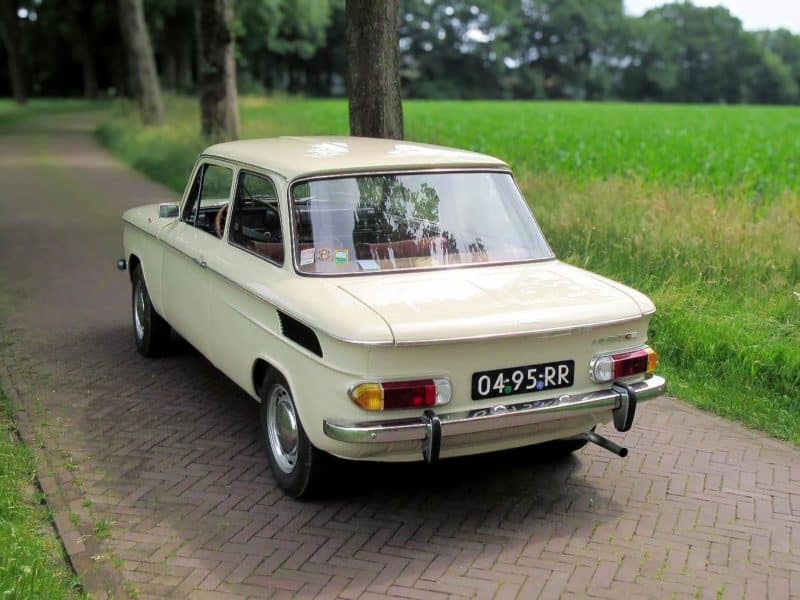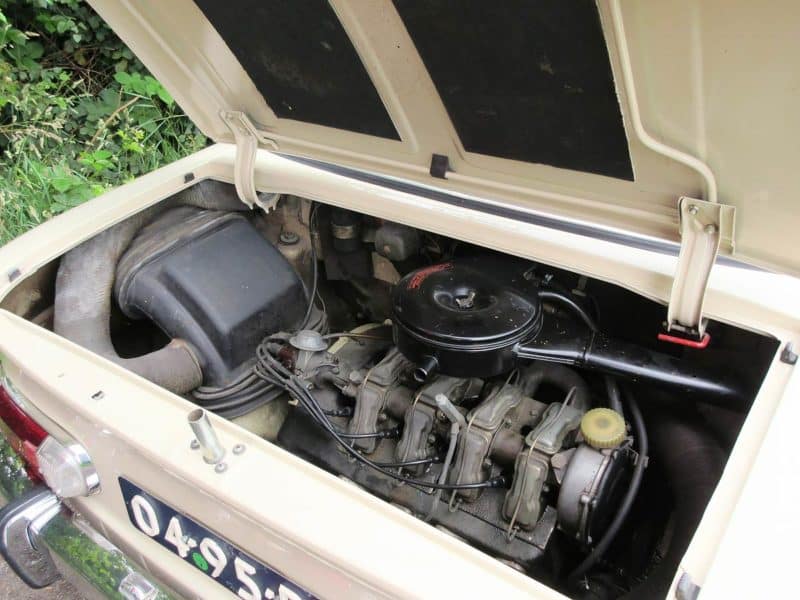In 1965, NSU introduced a groundbreaking car, developed directly from the successful Prinz 1000 that was launched a year earlier. This car, known as the Typ 110, marked NSU's entry into the smaller middle class. It was in fact the 'big brother' of the Prinz 1000, with a longer wheelbase and a distinctive, longer front. This front was characterized by rectangular headlights and a striking 'tin-chrome' plate between these lights, supplemented with bumpers with bumpers.
The evolution to the NSU 1200
In September 1967 the Typ 110 underwent a major transformation and was renamed the “1200”. Although little changed on a cosmetic and constructive level, the most important innovation was in the motor area. The 1200 was equipped with the more powerful engine of the faster “S” versions of the Typ 110. This 1177 cc engine, with a chain-driven overhead camshaft and an aluminum cylinder head, delivered a power of 55 DIN hp – only 5 hp less than the “S” models, but without sacrificing dynamics.
“Comfort” as a luxury standard
The NSU 1200 was originally available in two equipment variants: the standard 1200 and the more luxurious 1200 C, where the 'C' stood for Comfort. The Comfort variant offered luxuries such as sleeping seats and an interior upholstered with a combination of fabric and artificial leather, padded armrests, an electric clock, two-speed windshield wipers and rubber bumpers on the bumpers. In 1969, the standard variant was phased out, making the “C” temporarily the only option within the NSU 1200 range.
Expansion and refinement
The range was further expanded at a later stage with the 1200 C Automatik, in which the automatic transmission of the Ro80 was integrated. All 1200 models, just like the predecessor Typ 110, were known for their high-quality finish and attention to detail, such as separate temperature control and parking lights. The front ventilation windows, which can be opened with a rotary knob, also stood out. What particularly impressed was the temperament of the alloy engine with overhead camshaft, which, in combination with precise steering and dynamic driving behavior, provided an enjoyable driving experience.
A class of its own
Despite some negatives, such as sensitivity to crosswinds, the NSU 1200 was always a step above its price and class peers. This also applied to the Typ 110. When production of the 1200 ended in 1973, 227.938 units had been sold. These cars were chosen by motorists who wanted to distinguish themselves and who appreciated quality and non-conformism.







Near Heerenveen, in Terband, there is a special NSU museum of Mr Knijpstra.
This is an excellent solution for the baker who has baked the rusks too large!
We had a Prinz 2 cylinder and there were six of us in it.
My father drove a Typ 110 in the sixties. With a brother who was an NSU dealer, this was no other option. I remember that my father had placed a bag of cement in the forecastle to improve road holding. Later, my uncle gave us an orange NSU 1200 TT, intended for racing through the fields behind the farm. It was completely worn out by me and a friend. Eternally a shame. NSU was an excellent piece of engine technology from the best German engineers. At the time, much further than Volkswagen. Unfortunately, things went wrong in Neckarsulm.
I like the Prinz and the 1000 and 1200c much better
Nice cars, but I don't see what was 'groundbreaking' about them and also why this car would be a 'step higher' than its competitors. Rear-engine and rear-wheel drive wasn't exactly progressive in 1967; front-wheel drive and a third/fifth door. But he didn't have that. A groundbreaking NSU was the RO80, but that never came to anything.
Where else to buy ????????????? Please email me ceesros@msn.com.
Gr. Ceesros
What a car, this NSU had a green one in a TTS version, a real racing monster sports steering wheel, sports seats, etc. Wonderful memories. Thanks again for this nice article. Now live in Spain but look forward to the articles every week Auto Motor Klassiek. Wish each of you a very Merry Christmas and a Very Happy, Healthy and Prosperous 2024. Kind regards, Ruud.